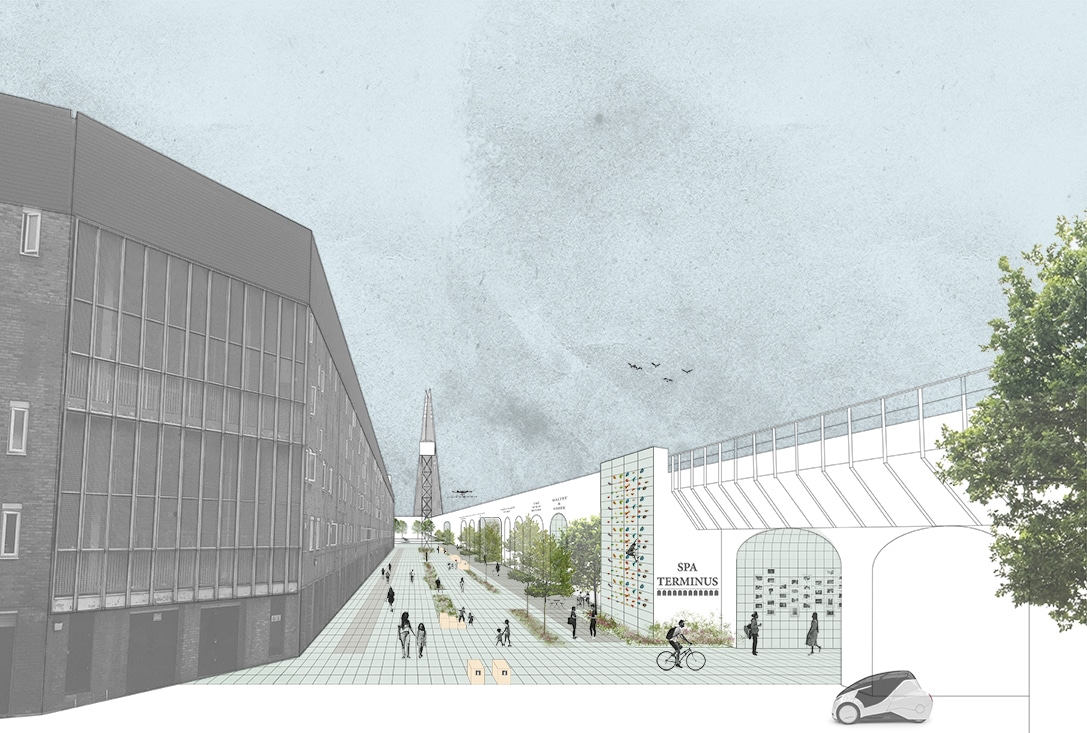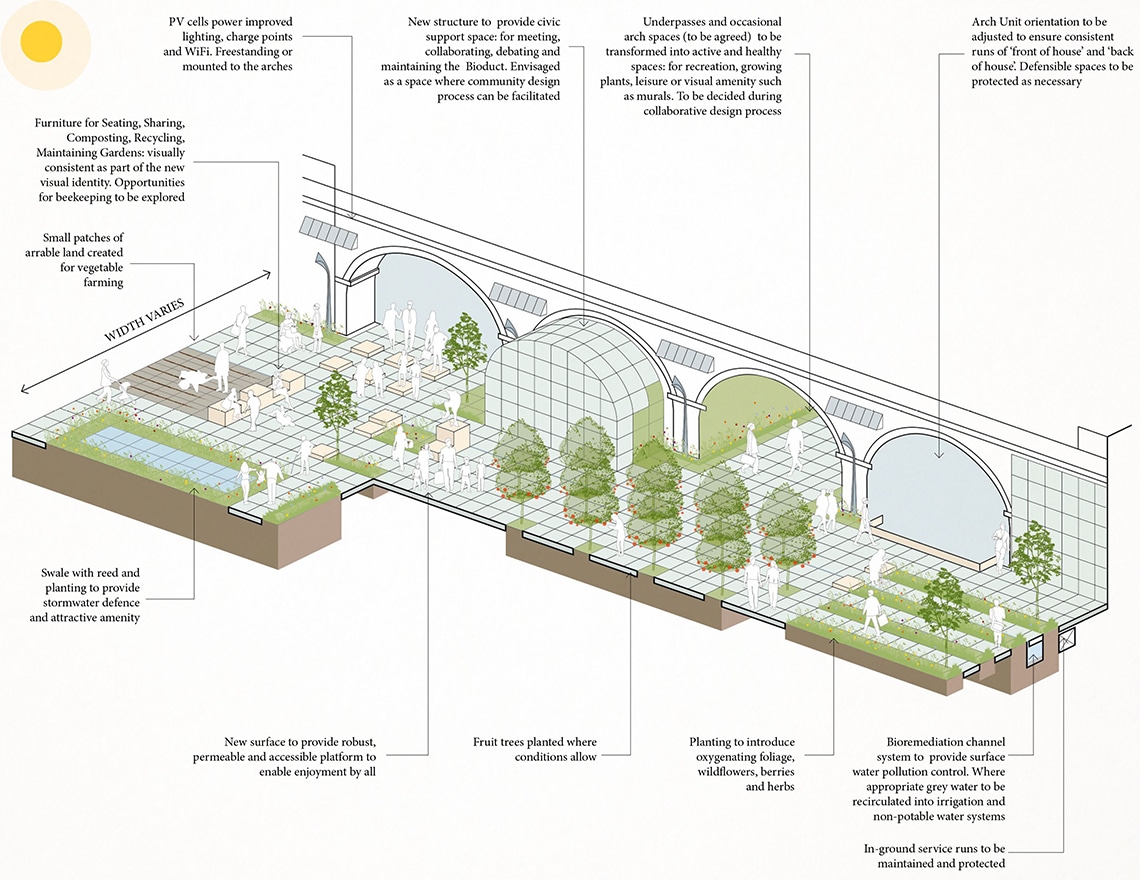Bermondsey Bioduct
An infrastructure of biodiversity and productive parkland
Arches In A Garden
Background: Arches as Interstitial Industry
The arches support the metabolism of the city: a spine of relatively low-cost workspace – providing everything from joinery to storage, light industry to fine dining, construction to entertainment – that is essential to keeping the city moving. This vital environment caters for a broad cross-section of society, affecting change and making things happen for those around it. Wholesalers provide drinks to hotels of the city, while storage companies offset ever-dwindling living space in nearby apartment buildings.
Yet this thriving microsystem of trade is impeded by the quality of the built environment that it inhabits. Our proposal seeks to enhance the experience without compromising the essential character of the viaduct and workspaces within.
The Vision: A Smart Urban ‘Bioduct’
Running alongside, through and under the viaduct, our proposal will provide a thriving, active and creative productive parkland that will bring fresher air and ecological diversity to the heart of London: an urban ‘bioduct’. By integrating digital and data technologies, including potentially pavement energy-generation, this becomes a Smart Urban Bioduct, to be delivered as follows:
- Designate
Establish a defined boundary of land that will become a new linear parkspace, legally in terms of title and land use for planning.
- Excavate
Dig up the land as required, to provide necessary infrastructure: servicing and drainage and supporting the proposed new habitat.
- Resurface
Introduce a new permeable deck to provide the new walkways, terraces and uses that the new parkland will offer
- Decorate
Follow a community-led design process to deliver a new visual identity for the area, manifested in furniture, signage and architectural intervention as necessary.
- Circulate
This can be the Most Circular Park in The World, by following circular economy principles and systems.
By following this process we believe the Low Line will be an exemplar urban space for cities across the world, for now and future generations.



